Increase your employees’ awareness of fall hazards and fall prevention across the construction industry.
Fact:
According to the Bureau of Labor Statistics, a worker died every 111 minutes from a work-related injury and a total of 4,764 fatal work injuries were recorded in the US in 2020.
Costs of Slips, Trips and Falls
According to the 2021 Liberty Mutual Workplace Safety Index, from back injuries to broken bones, the top ten causes of workplace injuries cost U.S. businesses more than $1 billion a week in nonfatal workplace injuries.
- Falls from the same level or falls to a lower-level ranked 2ndand 3rd in the top injury causes.
- Falls on same level ranks second, with direct costs of $10.58 billion, and accounts for 18.1 percent of the total injury burden
- Falls to a lower-level ranks third at $6.26 billion and 10.7 percent of the burden.
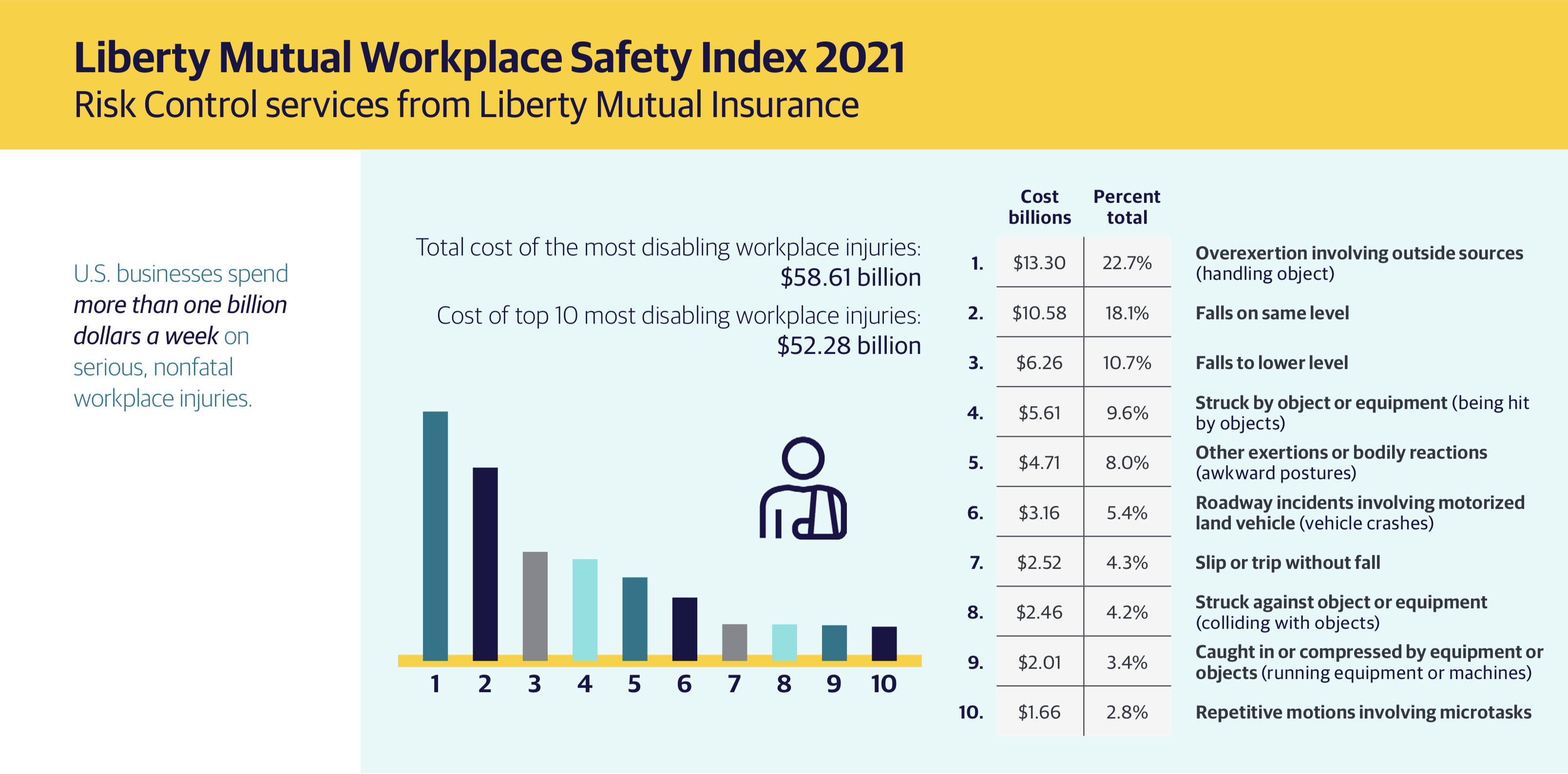
Source: Liberty Mutual
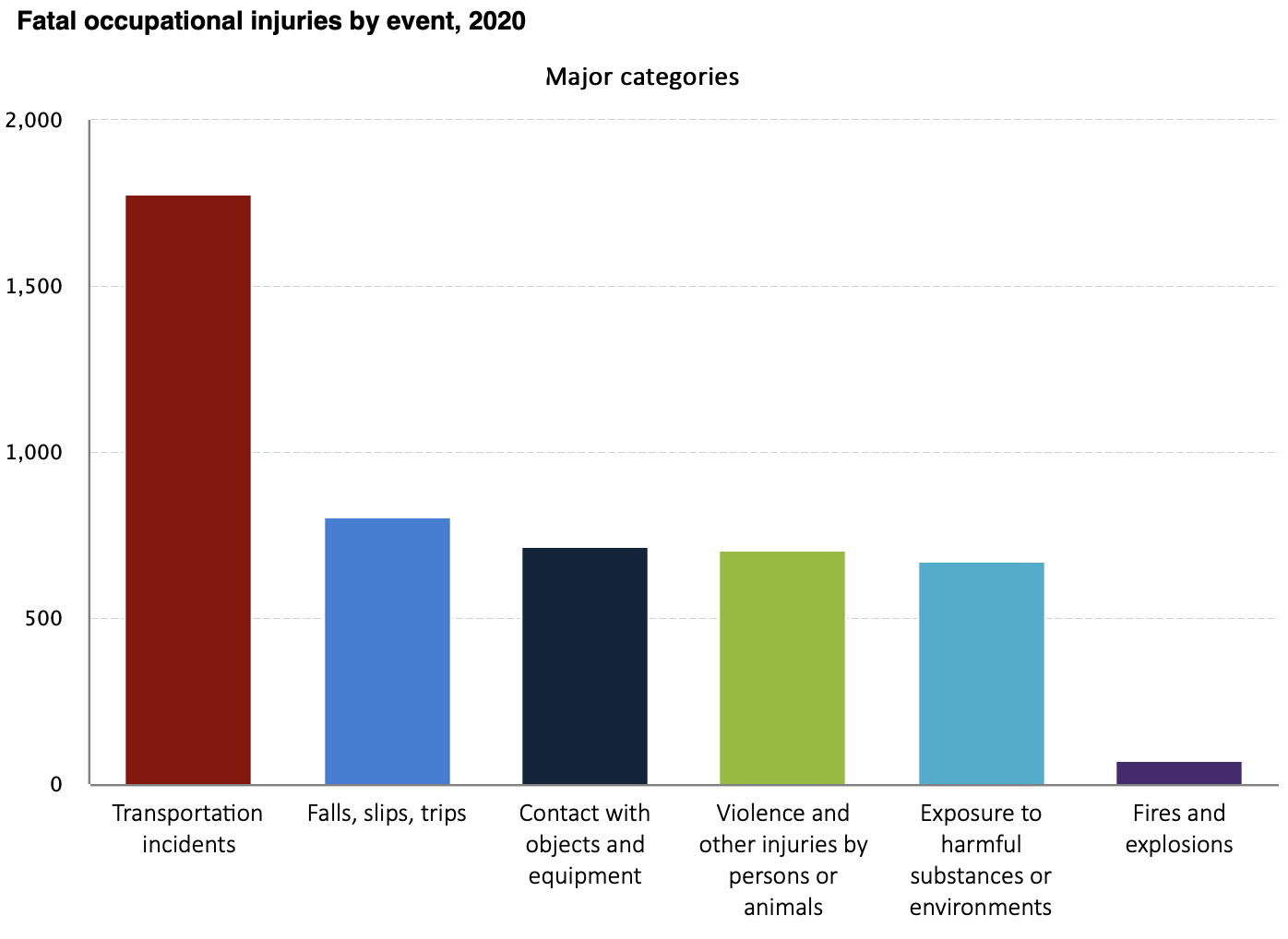
Source: U.S. Bureau of Labor Statistics
According to the Bureau of Labor Statistics, in 2020, slips trips and falls were the second leading cause of fatalities behind transportation incidents making it ever important to not only train your employees about fall hazards and fall prevention, but to also ensure that they have the proper PPE and know how to wear it.
Fall protection is one of the biggest problems in construction. According to the Bureau of Labor Statistics in 2020, there were 1,008 fatal injuries in the construction industry. Did you know that most fatal slips, trips, and falls are from falls to a lower level?

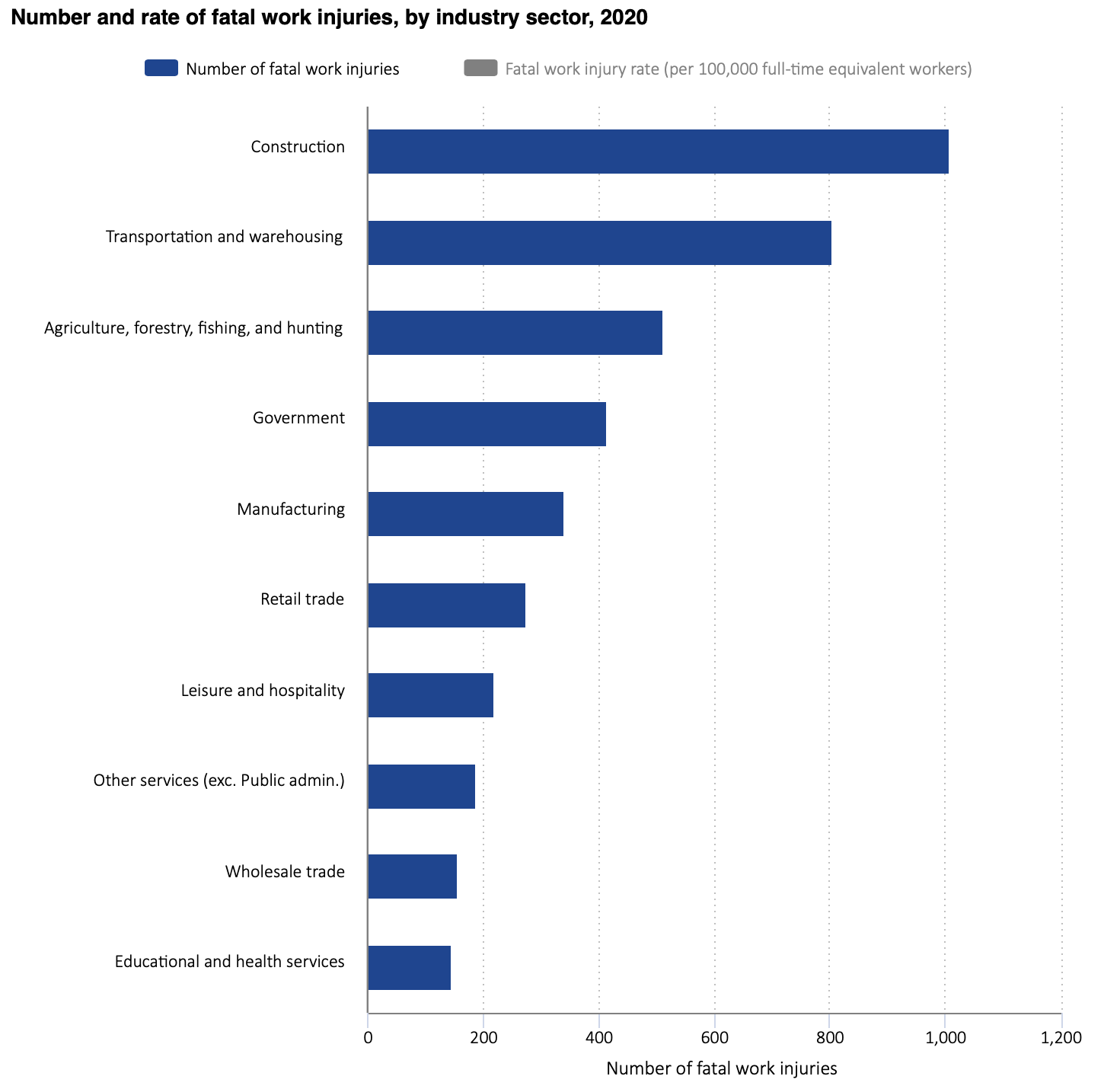
Source: U.S. Bureau of Labor Statistics
Focus on Fall Protection Equipment
Falls are a leading cause of death and injury in the workplace, but they can be prevented when workers understand proper set up and safe use of safety equipment. Fall protection is a vital part of any safety program. The 3M™ DBI-SALA® ExoFit™ X-Series Safety Harnesses are designed to fit your industry or application. Change the way you work and redefine what you should expect from a safety harness designed for ultimate productivity and performance.

Fitting a Harness
One size does not fit all and in addition to having the right fall protection, it is vitally important to choose the right harness size. Keep in mind that if a person is wearing bulkier clothing, they may require a larger harness size. Do not just assume that a person who wears a particular size shirt will automatically fit into the same size harness. Consulting a harness sizing chart and a safety expert will help to ensure a proper fit. Remember, a safety harness is their last line of defense in fall protection!
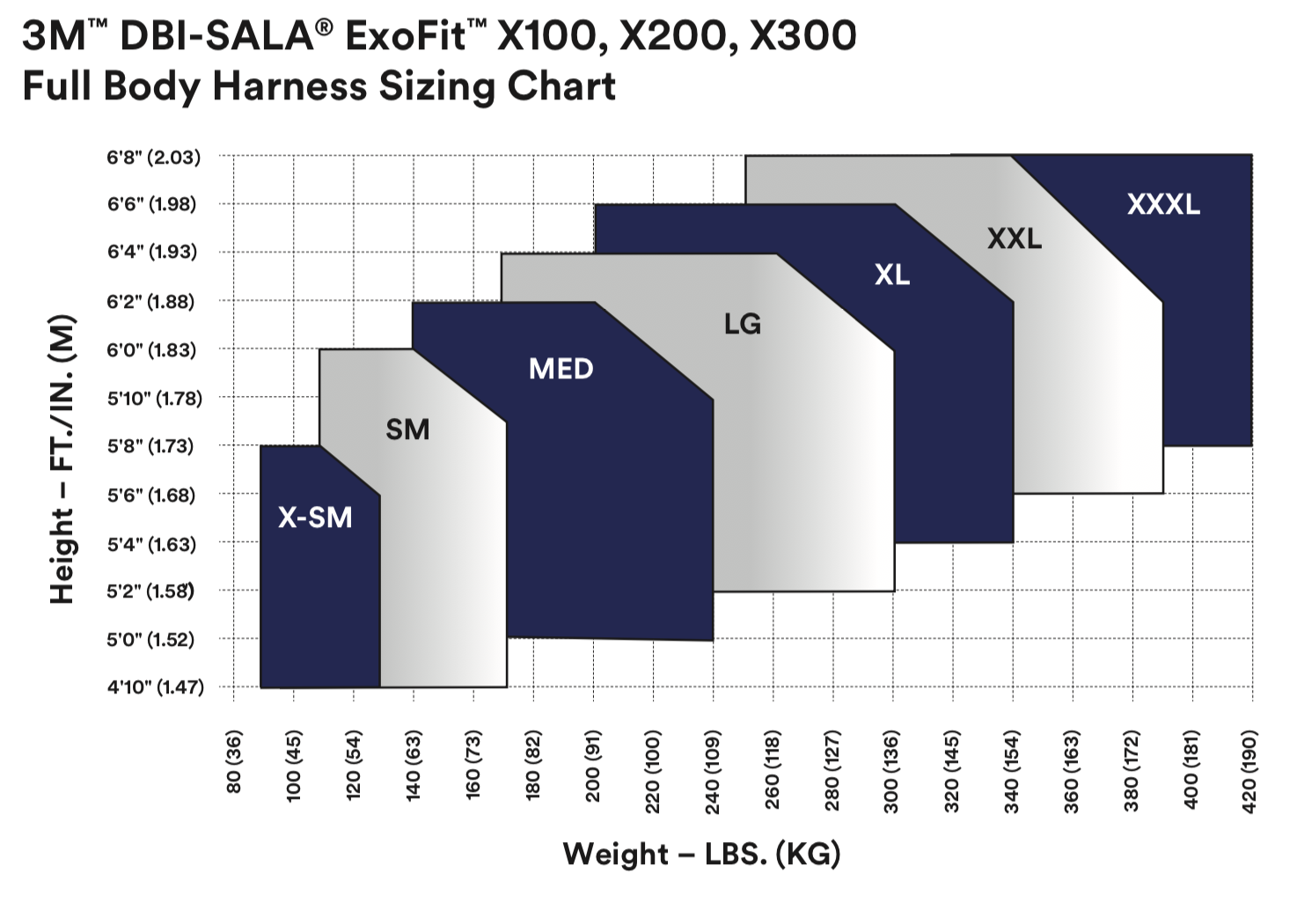
Calculate Total Fall Distance
Properly calculating your Total Fall Distance (TFD) (aka Swing Fall Distance) goes hand in hand with the right fall protection.
Calculating your TFD will differ based on whether you are using a shock-absorbing lanyard or a retractable lifeline. OSHA offers guidance on what variables should be considered when calculating the total fall clearance distance at OSHA.gov.
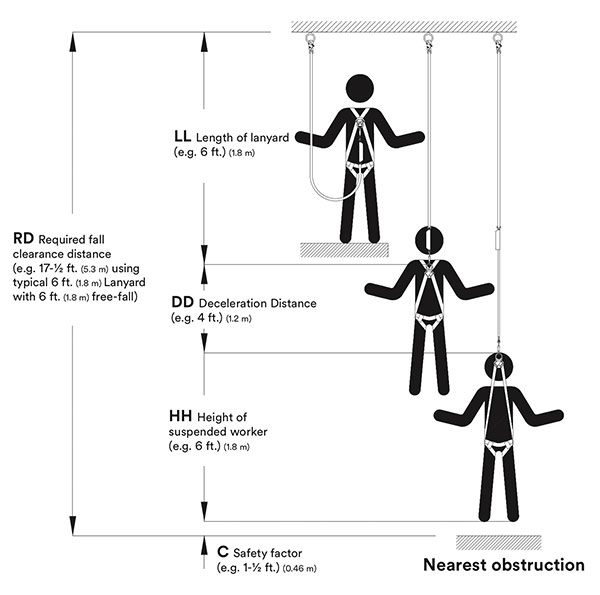
Properly Fit & Wear a Harness
Fitting a full body harness with D-rings? According to OSHA, it is important to follow these simple steps:
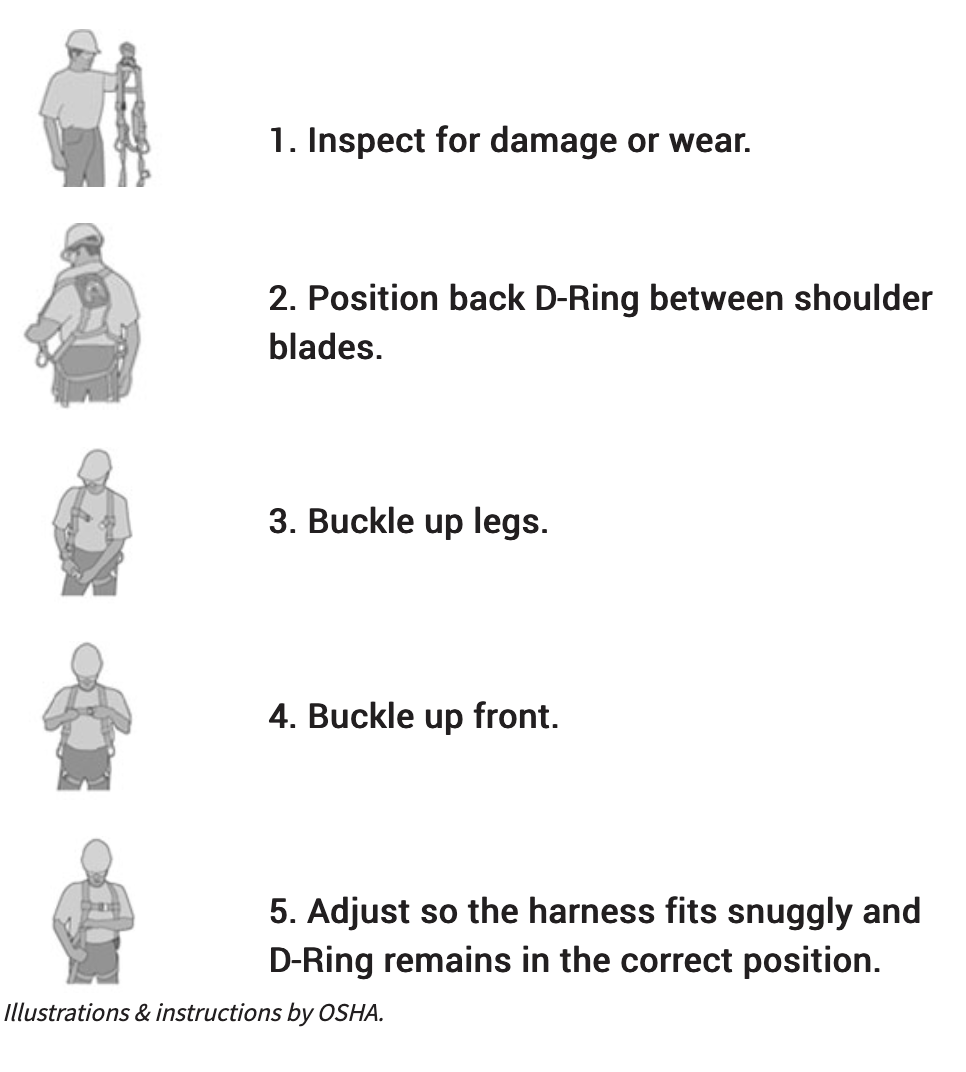
Why a prompt rescue is just as crucial as a prevented fall.
By choosing the right harness, lanyard and/or lifeline, you have taken the crucial step to prevent a fall, are you just as ready for the rescue? Start by establishing an effective plan taking the below points into consideration for an immediate onsite rescue:
- Don’t limit the rescue to a self-rescue as the affected person will likely need assistance
- Factor in contingencies for availability of personnel and equipment
- Schedule regular practice drills for executing the plan
- Develop a stand-alone rescue plan in addition to calling 9-1-1
- Ensure that suspension trauma safety/release straps are equipped on all harnesses and are inspected before donning the harness.
Suspension trauma—why every minute matters. According to ANSI, the recommended goal for rescue contact with the subject is less than six minutes. When a fallen worker is suspended for too long, their harness leg straps may constrict their veins, reducing the flow of oxygenated blood to their heart, brain, and kidneys. Not every worker will experience suspension trauma, but for those who do, it can lead to unconsciousness and possibly death.
Did you know there are additional factors could put workers at greater risk and may contribute to suspension trauma such as:
- Pre-existing cardiac conditions
- Inability to make leg movements
- Age
- Dehydration & exhaustion can increase both the chance and speed of when suspension trauma occurs.
Looking for more ideas on how to provide your employees with the PPE and training they need to avoid slip and fall injuries on the job? Talk to one of our safety advisors today.
Have a safe day!













